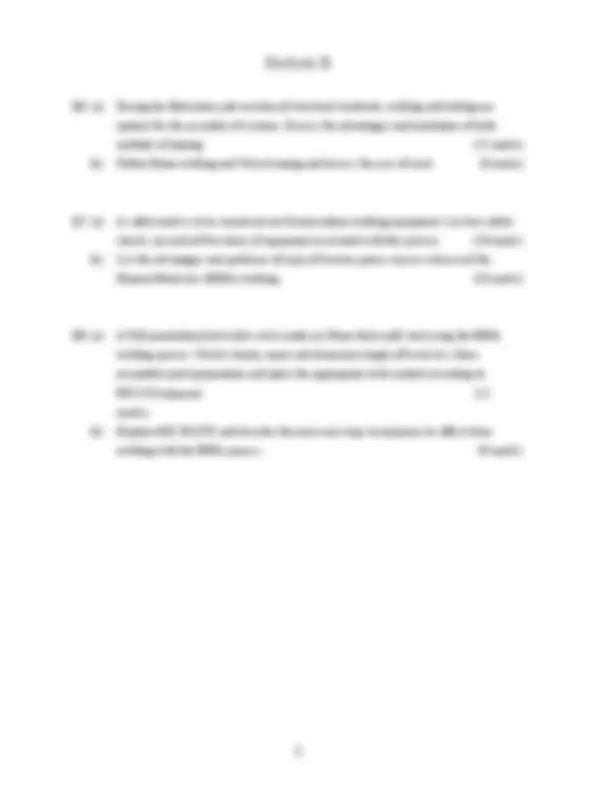



Study with the several resources on Docsity

Earn points by helping other students or get them with a premium plan


Prepare for your exams
Study with the several resources on Docsity

Earn points to download
Earn points by helping other students or get them with a premium plan
Community
Ask the community for help and clear up your study doubts
Discover the best universities in your country according to Docsity users
Free resources
Download our free guides on studying techniques, anxiety management strategies, and thesis advice from Docsity tutors
Main points of this past exam are: Horizontal Milling Machine, Milling Machine, Workpiece, Closed End, Vertical Milling, Milling Cutters, Horizontal Milling, Centre Lathe, Chuck, Tailstock
Typology: Exams
1 / 3

This page cannot be seen from the preview
Don't miss anything!


(NFQ – Level 6)
Instructions Answer FIVE questions. Answer THREE questions from Section A and TWO questions from Section B. Use separate answer books for each Section. All questions carry equal marks.
Examiners: Mr. R. Kennedy Mr. M. Daly Mr. J. Burns Mr. J. Connolly Mr. R. Simpson
Q1. (a) When cutting a slot in a workpiece on a milling machine what checks would you first carry out and explain these. (6 marks) (b) What type of cutter is used to cut a closed end slot in a vertical milling machine? (2 marks) (c) List and describe with diagrams three other milling cutters and state their use. (9 marks) (d) Why has a horizontal milling machine got a lower speed range than a vertical milling machine? (3 marks)
Q2. (a) Why is it important for cutting tools used on a centre lathe to be set on centre? (4 marks) (b) Sketch the spindle nose of a centre lathe indicating how the chuck is located and held. (8 marks) (c) State two uses of a tailstock on a centre lathe. (5 marks) (d) State the type of operation which would require the use of a two-point travelling steady. (3 marks)
Q3. Sketch the following and give an example of the use of each: (i) Bevel gauge (4 marks) (ii) Angle plate (4 marks) (iii) Vee block (4 marks) (iv) Centre square (4 marks) (v) Odd leg callipers (jenny callipers) (4 marks)
Q4. (a) In the three and four jaw lathe chucks, state which jaws are neither reversible nor interchangeable and why? (6 marks) (b) Calculate the r.p.m. when turning a 50mm. dia. mild steel bar if the cutting speed is 27m/min for H.S.S. (4 marks) (c) Also give the r.p.m. for knurling the same bar, reaming a hole 50mm dia., boring a hole 50mm dia. all in mild steel. (6 marks) (d) List the golden rules when using a carbide parting-off tool. (4 marks)
Q5. Give brief answers to each of the following:- (a) What is meant by the terms ‘lead’ and ‘pitch’ as applied to screw threads? (2 marks) (b) What is the purpose of rake and clearance angles on cutting tools? (2 marks) (c) Can a parting-off tool be used for parallel turning? (2 marks) (d) In a machining operation, what is meant by cutting speed? (2 marks) (e) By how much is the diameter of a workpiece reduced, if the cross-slide control is rotated one complete revolution? (2 marks) (f) When machining a nut and bolt which should be threaded first, and briefly give a reason for your answer. (2 marks) (g) To what accuracy does a vernier callipers and micrometer read to respectively? (2 marks) (h) What is meant by the ‘safe edge’ on a file, and why is it necessary? (2 marks) (i) What is the included angle on the taper of a centre drill? (2 marks) (j) What is the purpose of a gap bed on a centre lathe? (2 marks)